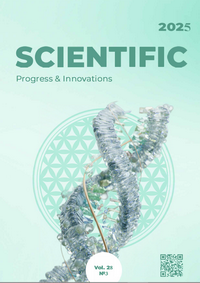Agrobiological evaluation of sowing dates and techniques for grain corn
DOI:
https://doi.org/10.31210/spi2025.28.03.09Keywords:
corn, sowing date, sowing method, agrobiological evaluation, yield, growth parameters, Forest-SteppeAbstract
The article presents an agrobiological analysis of the influence of sowing dates and methods on the growth, development and productivity of corn (Zea mays L.) in the conditions of the central Forest-Steppe zone of Ukraine. The relevance of the topic is associated with increased climatic risks, changes in agrometeorological conditions and increasing requirements for the effective use of soil and climatic resources. The purpose of the study is to generalize modern scientific approaches to optimizing the timing of corn sowing, taking into account biological, climatic and technological factors. The review analyzed publications by Ukrainian and foreign scientists devoted to the influence of sowing on the morphometric parameters of corn, biomass formation and yield. It is shown that early sowing dates provide better initial conditions for plant development, a longer growing season and better realization of the genetic potential of yield. At the same time, the use of ridge sowing contributes to the preservation of moisture in the soil and improvement of the development of the root system, which is confirmed by research data. On the other hand, late sowing dates significantly reduce the biological productivity of plants and lead to crop losses of up to 25–30 %, which is proven by domestic and international studies. The regional features of corn adaptation to sowing dates in the conditions of the Forest-Steppe are highlighted, as well as the relationship between weather conditions and morphological characteristics of plants. The obtained generalization results can be used as a scientific basis for adaptive management of corn cultivation technology in conditions of climate change. It is noted that the results of the review deepen the understanding of the factors that determine the efficiency of sowing and serve as a guideline for the development of practical recommendations in modern agricultural production. Another promising direction is the use of remote monitoring and artificial intelligence for operational decision-making in field conditions. The obtained data can form the basis of adaptive technologies for corn cultivation in conditions of increased climatic instability.
Downloads
Published
How to Cite
Issue
Section
License
Copyright (c) 2025 Scientific Progress & Innovations

This work is licensed under a Creative Commons Attribution 4.0 International License.

 Creative Commons Attribution 4.0 International Licens
Creative Commons Attribution 4.0 International Licens